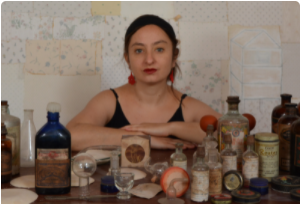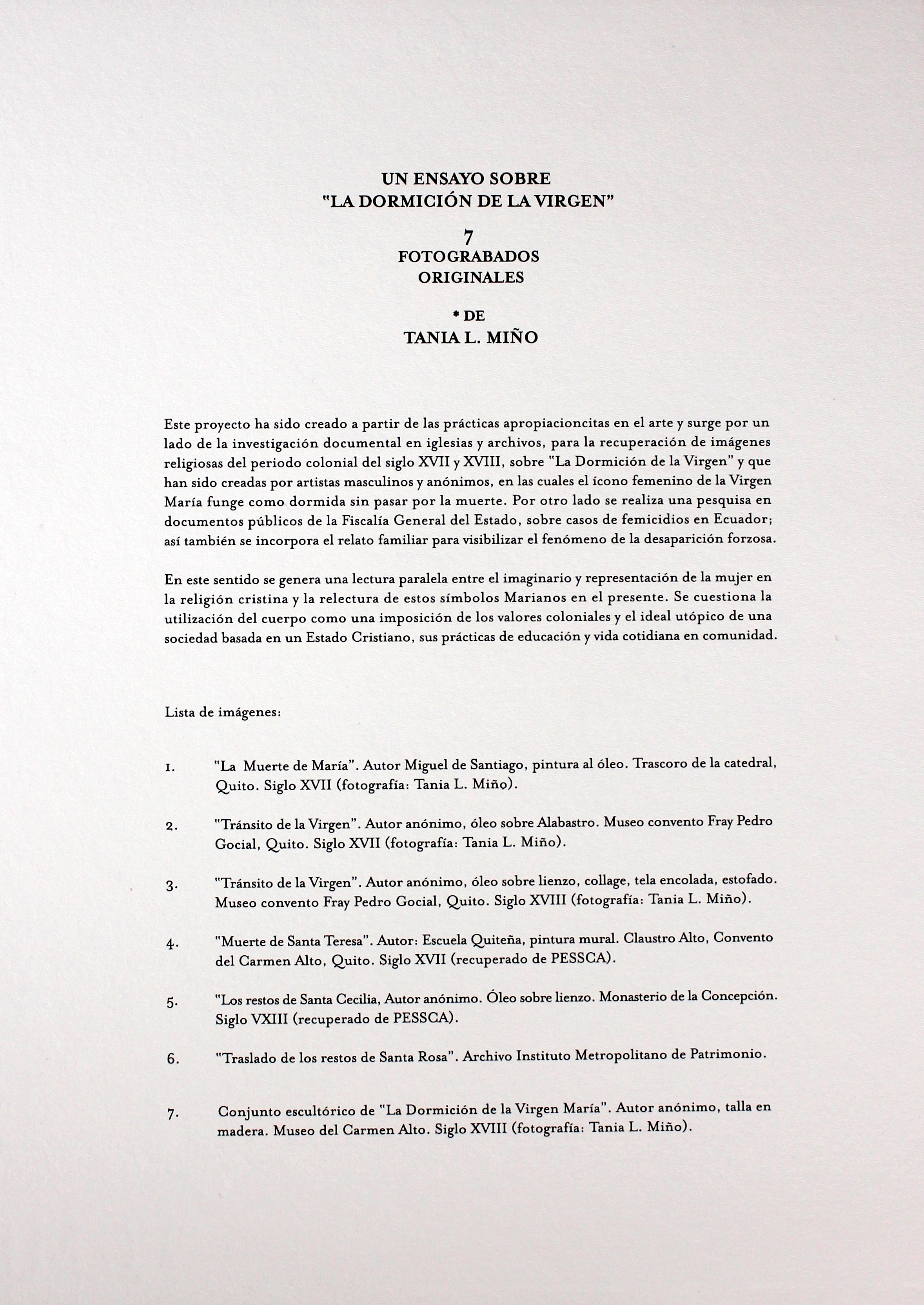
Tania Lombeida Miño (1980)
Multidisciplinary artists, she completed a Masters in Artistic Creation: Contemporary Realisms and Treatment of Environments, at the University of Barcelona. She graduated in Fine Arts at the Universidad Central del Ecuador, and in Restauration and Museum Studies at the Universidad Tecnológica Equinoccial. She co-funded the art collective La Emancipada, with which she manages the Annual Meeting for Arte Mujeres Ecuador (AME). She also manages the project ARCHIVAS & DOCUMENTAS_Mujeres, Arte & Visualidades Ecuador (Archives & Documents_Women, Art & Visibilities Ecuador) – an online data base about women artists and their work in the art systems. She worked as a consultant for the Organization of Ibero-American States (OEI) alongside MERCOSUR and the Argentinian Ministry of Culture, for the project Mapa de Residencias Artísticas del Mercosur (2017).
In 2013 she was awarded an academic grant by the Ecuadorian government to continue her postgraduate studies in art. She has been awarded the Grant Fund for Art and Culture Projects by the Ministry of Culture and Heritage of Ecuador (both for individual and collective projects) in 2008, 2016, and 2017.
Her published work includes: “Case of Study: Ecuadorian Women’s Art Venue” in Feminism and Museums vol 1 (2017); Archivas & Documentas: un espacio de enunciación para las mujeres artistas in Zoila (2018). ”Ecuador la Tierra y el Oro. Visualidades en resistencia: contacto-transferencia-interpretación de la cobertura mediática 1990-2014”, University of Barcelona (2014),
Her work has been displayed in various museums, cultural centres, and galleries in Ecuador and abroad (Germany, Venezuela, Spain).

Un ensayo sobre "la dormición de la Virgen"
(An Essay on the Dormition of the Virgin)
1 out of 8
Tania Lombeida Miño
2019
Photoengravings on paper, 35 x 25cm
In this manner, a parallel reading is created between the imaginary and the representation of woman in Christian religion and the re-reading of these Marian symbols in the present. It questions the usage of the body as an imposition of the colonial values and the utopian ideal of a society based on a Christian State, its educational practices, and daily community life. Illustration list:
- “The Death of Mary”. Author Miguel the Santiago, oil painting. Behind the choir in the cathedral, Quito. 17th Century (photograph: Tania L. Miño).
- “Passing of the Virgin”. Author anonymous, oil on Alabaster. Convent Museum Fray Pedro Gocial, Quito. 17th Century (photograph: Tania L. Miño).
- “Passing of the Virgin”. Author anonymous, oil on canvas, collage, glued fabric, estofado. Convent Museum Fray Pedro Gocial, Quito. 18th Century (photograph: Tania L. Miño).
- “Death of Saint Teresa”. Author: Quinteña School, mural painting. High Cloister, Convento del Carmen Alto, Quito. 17th Century (recovered from PESSCA).
- “The remains of Saint Cecilia, Author anonymous. Oil on canvas. Monasterio de la Concepción. 18th (recovered from PESSCA) Century.
- “Moving the remains of Saint Rosa”. Archive of the Metropolitan Institute for Heritage.
- Sculpture set on “The Dormition of the Virgin Mary”. Author Anonymous, carved wood. Carmen Alto Museum. 18th Century (photograph: Tania L. Miño).